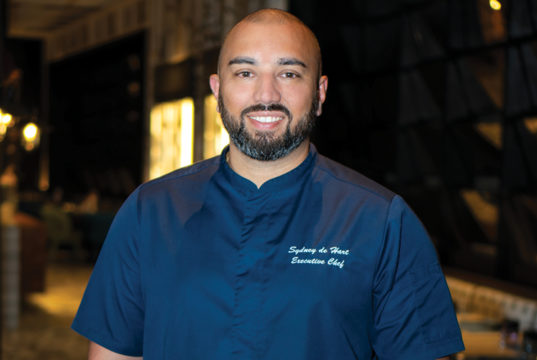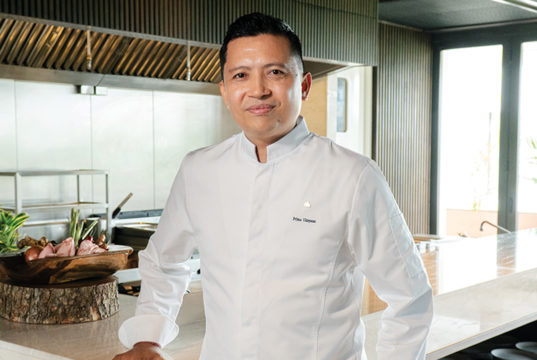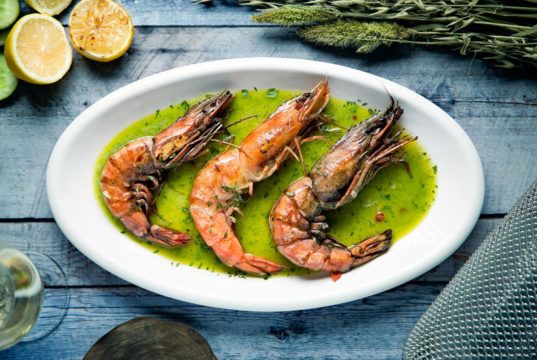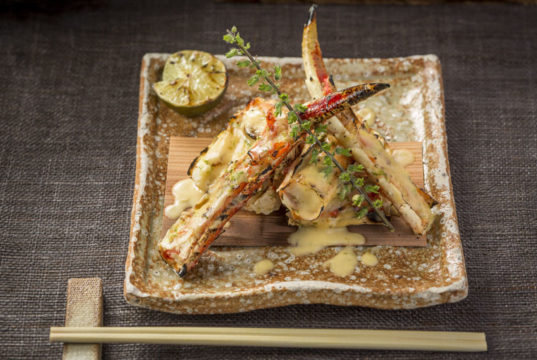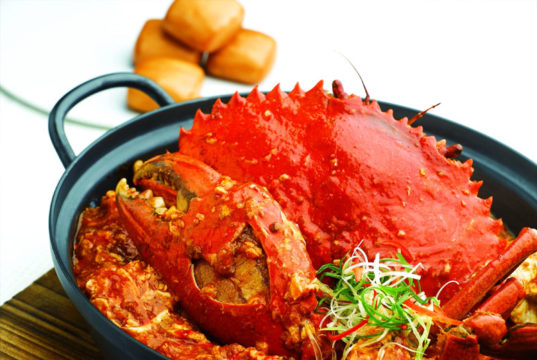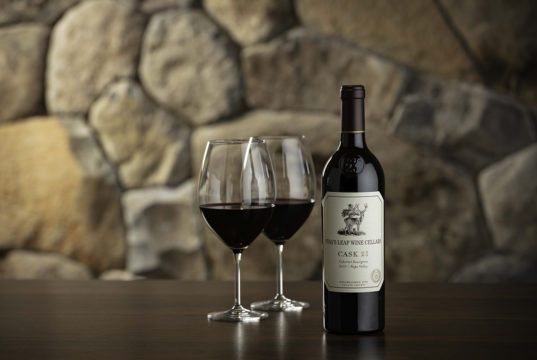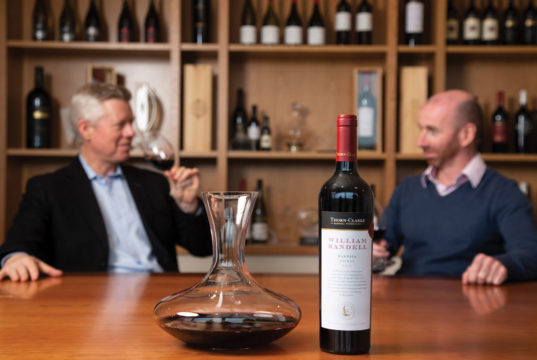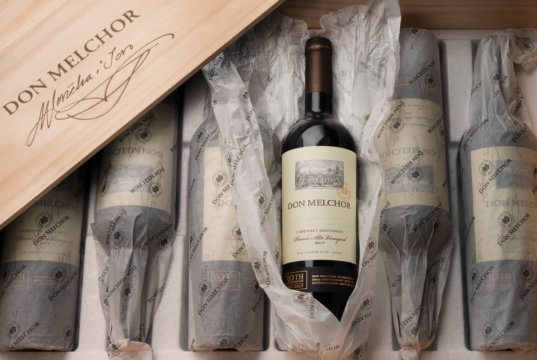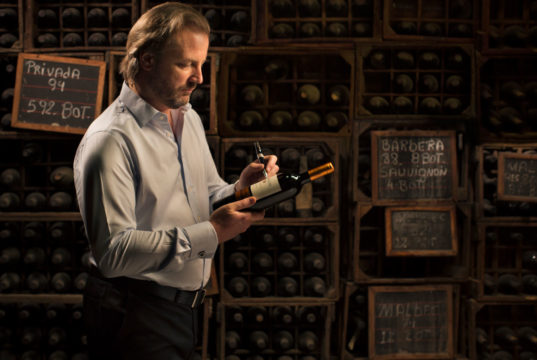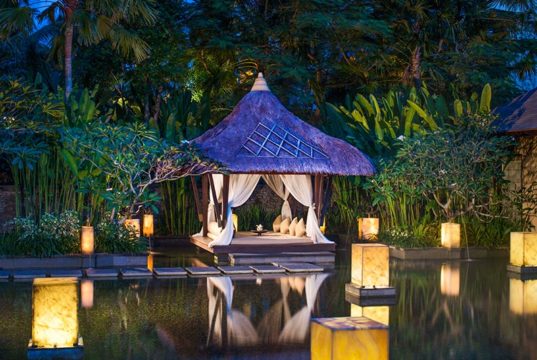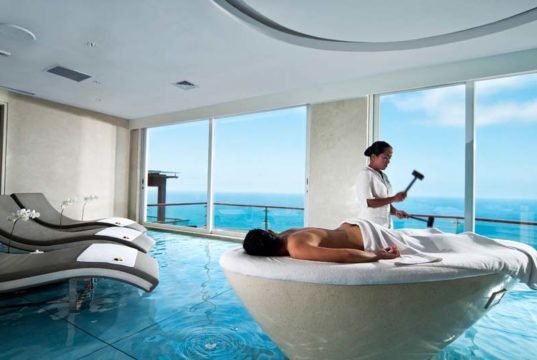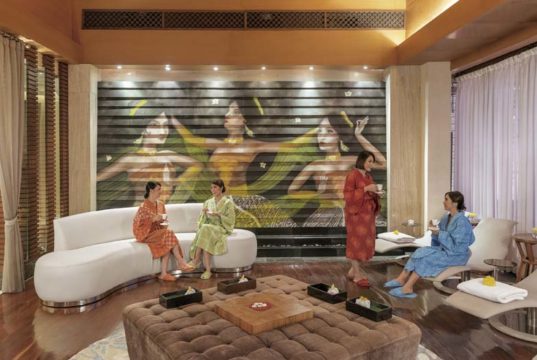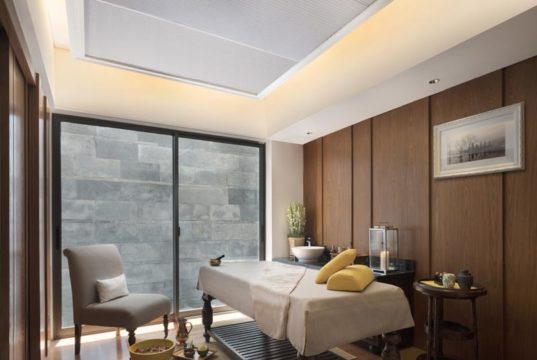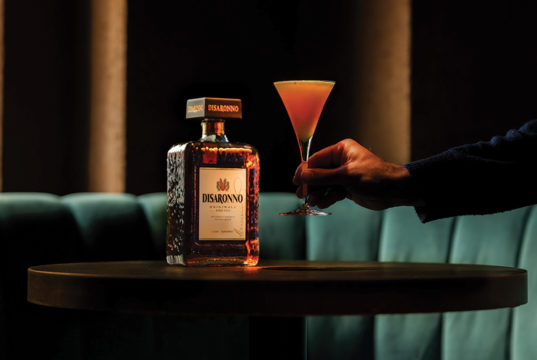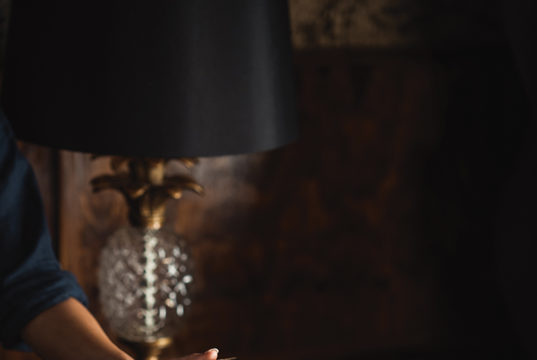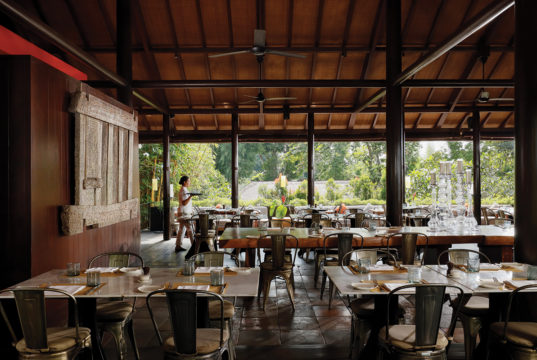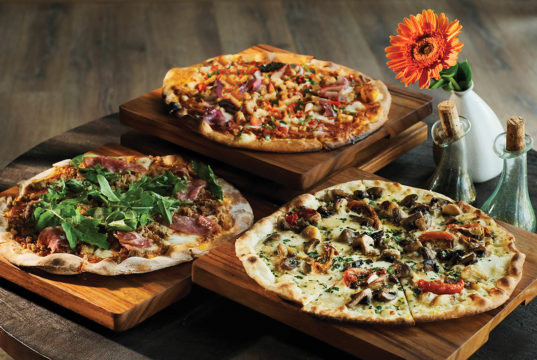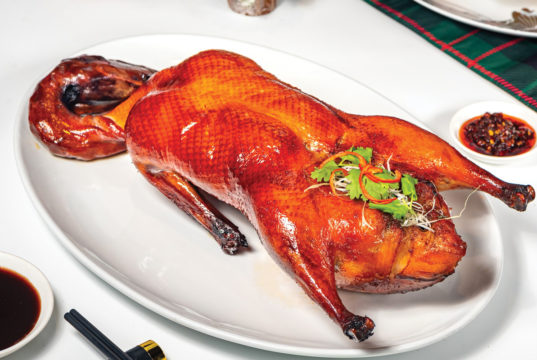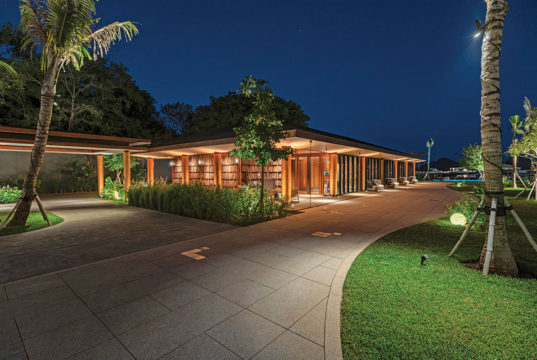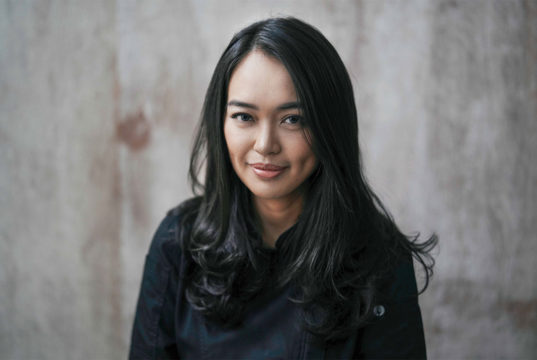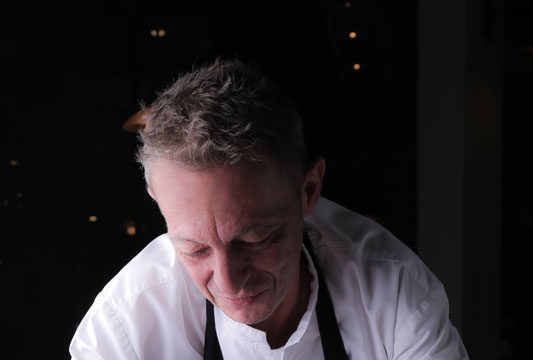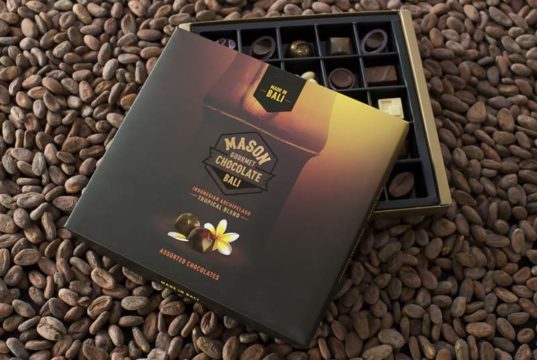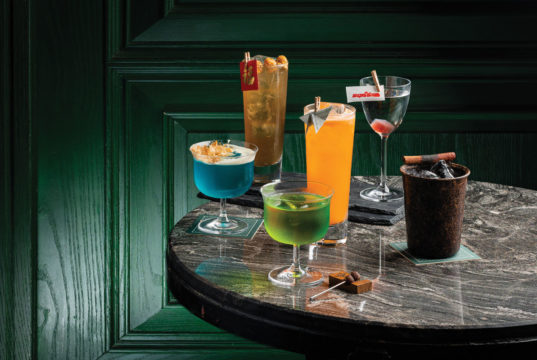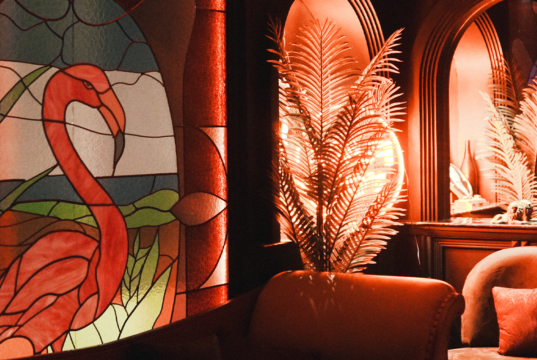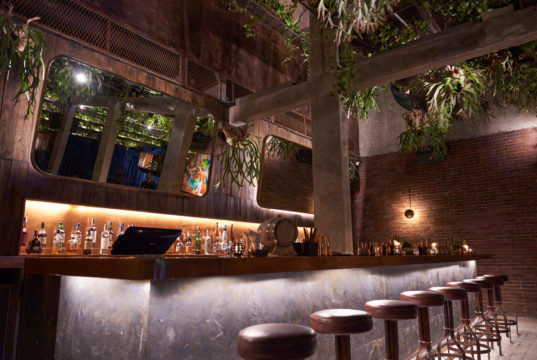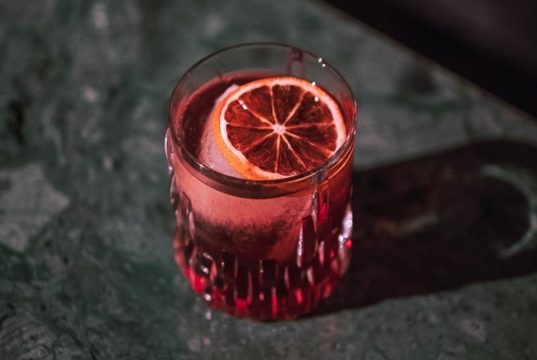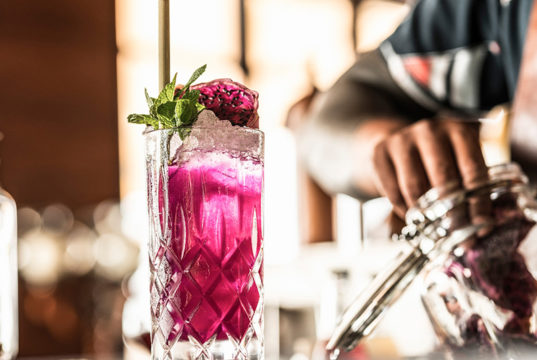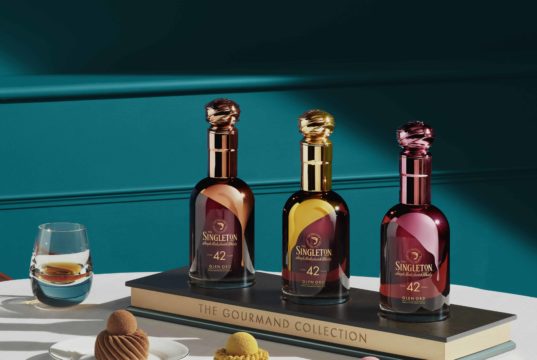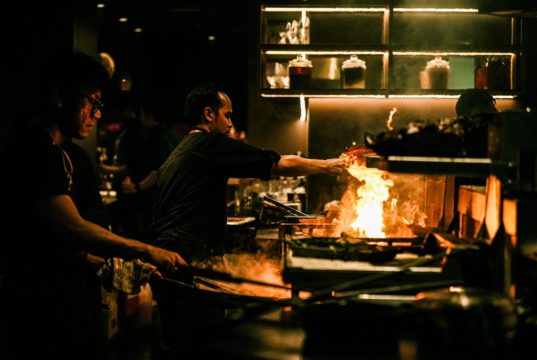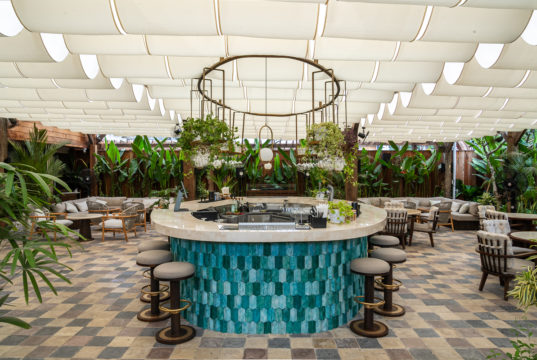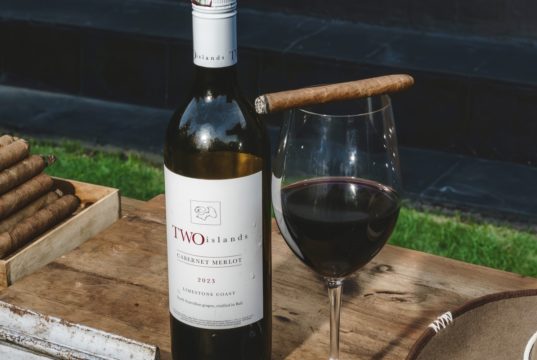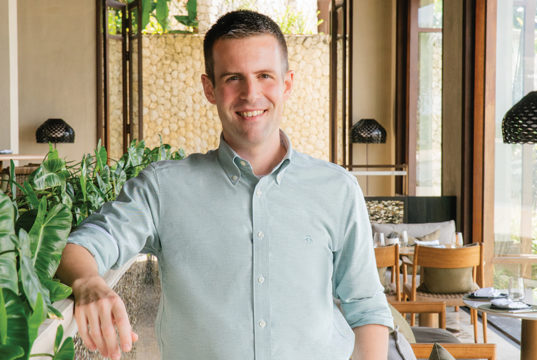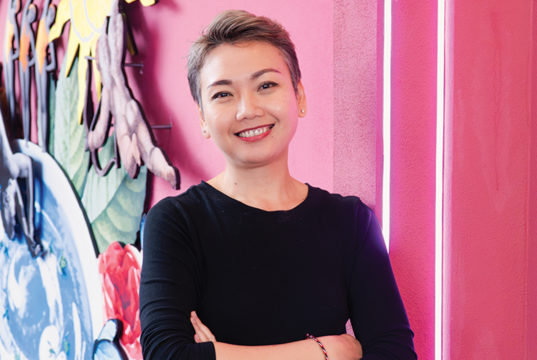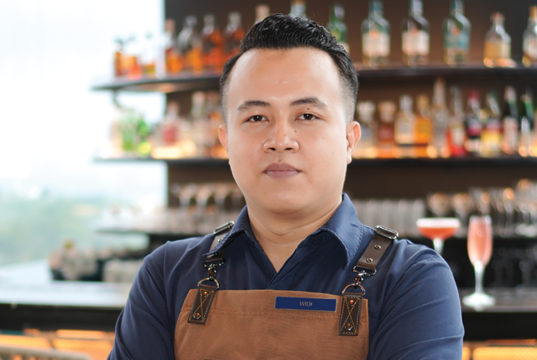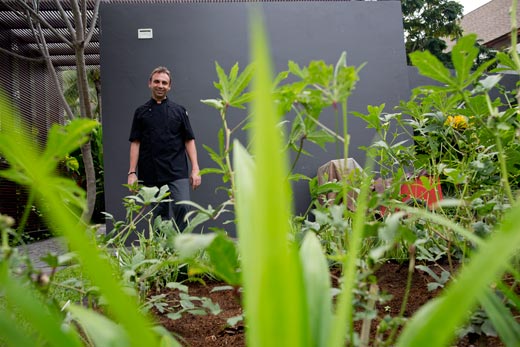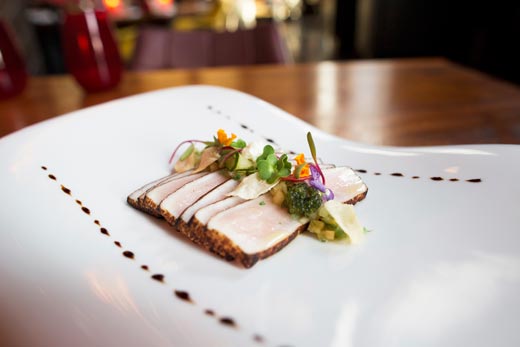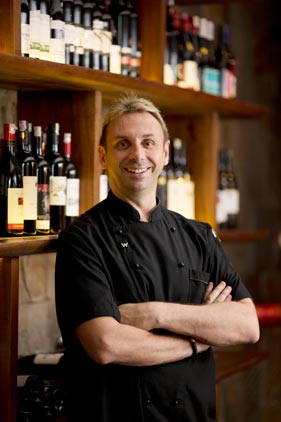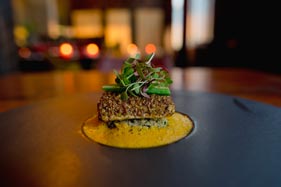Richard Millar, the Director of Cuisine at the W Retreat and Spa Bali, says the key to his eclectic, cutting-edge cuisine is high-quality ingredients, many of which he grows himself.
The quality of produce and where it has been sourced from are increasingly becoming as important to gourmands as the way a dish tastes. Consequently, many chefs are starting to jump on the locally produced or organic bandwagon, introducing more home-grown ingredients into their recipes. Some take the locavore ethos more seriously than others, with some even taking matters into their own hands.
As one of Bali’s hottest chefs and the Director of Cuisine at the W Retreat and Spa Bali, Richard Millar devotes a good amount of his time and energy to sourcing the very best produce. Not only does he utilise the raw bounty of Bali wherever he can, he also takes the time to work closely with farmers and fishermen, helping them to make the most of their crops and catch. Even when he must resort to importing the finest Australian beef, he still works just as closely with the overseas suppliers to make sure each cut is exactly how he wants it.
But this is a chef who is not content to simply gather his ingredients from outside. Millar has built and grown his own herb, spice and vegetable garden on the grounds of the W, and he nurtures each plant with his own bare hands before harvesting them for use in the dishes he cooks up at FIRE, the W Retreat and Spa Bali’s eclectic grill. He experiments with new produce and new flavours, each one fresher than the last.
I was lucky enough to try some of Chef Richard’s garden-fresh FIRE dishes, such as the signature mahi-mahi coated in coriander seeds, cumin, curry leaves and a freshly picked okra pod. It is truly remarkable how much of a difference it makes when an herb or spice has grown just metres away, not to mention when a fish has been caught from the nearby waters, or imported meat has been personally inspected, hand reared and hand selected.
We managed to draw Chef Millar away from his garden and kitchen to speak to him about his deliciously fresh five-star food. We found out about his experience at the W, his efforts to always create something new while always satisfying his guests, and, of course, his passion for creating the very best.
Q: You’ve been cooking for over 27 years throughout the Asia Pacific. Which country’s cuisine had the biggest impact on your personal style?
A: Australia is where I first started out, where I got serious about food and started to really understand it all. But it was my two years of working in Japan that had the biggest influence. I just fell in love with the place. The food was phenomenal, the quality of the produce was second to none, and what amazed me was the depth of skill and the discipline of the Japanese. I used to think I was pretty disciplined and quite a hard worker, but the Japanese were amazing and their skills are incredible. I really learned a lot there.
Q: Many of your dishes at FIRE have a Japanese influence, but how would you describe your cooking style overall?
A: It’s always hard to put a label on it, so I often use the term “eclectic.” It is pretty much the only way to sum it up because wherever I work, I make sure I adapt my style to that restaurant. Of course, I have my signatures and my own techniques, but I can’t simply categorise it. As a generality, I love to cook healthy food, and, as you know, I strive to use the best possible produce, locally sourced whenever possible.
For me, sourcing locally is really important and it’s really rewarding. You can find so much in Bali if you get out there and look for it. It’s all about networking, asking questions and trying new things. I’ve learnt so much from growing my own organic garden here at the W, seeing what grows and what doesn’t and experimenting with new herbs and spices. All these things really add to the whole flavour and the story of the food, rather than simply being on the phone and ordering from a price list.
Of course, when it comes to our specialty steaks at FIRE, I have to import to ensure I get the best quality cuts. I believe you should only import when you can’t find the quality produce locally and unfortunately, Bali’s beef just isn’t there yet. But I still make sure I have the same relationship with the farmers as I would if they were local. For example, at FIRE we have 8 different cuts from 3 different farms, all with very prime, quality aged meat. I know exactly where each cut has come from and how it has been fed. I’ve met with the farmers and I’m very particular about how it gets handled. Quality is very important to me and I strive to get the best in the kitchen.
Q: In the past year, you’ve changed the menu at FIRE three times. What can we expect from your new offerings?
A: I’ve just introduced Kiwami Wagyu to the steak selection. You can’t find it anywhere else in Bali and it is absolutely amazing. Kiwami is a Japanese word and it means “hand selected.” I get it from a really great farm in Queensland called Stockyard, and what they do is they get all their Wagyu cattle and they hand select the premium Wagyu with a marbling score of 9+, then they mark that Kiwami. It’s the best of the best. Everyone who eats it loves it. There’s a lot of Wagyu available in Bali, but I wanted the premium.
Q: FIRE was recently a finalist for “Best Hotel Breakfast” in the AsiaRooms.com Hotel Awards. What makes a really great breakfast and how do you make it as exciting as a W poolside lunch or a fine dining dinner?
A: Breakfast is a very special period. It has a sense of romance and intimacy, so I think it is important to capture that. A lot of hotel breakfasts make the mistake of going too big, and they lose the romance. Breakfast isn’t always about the size – it’s about the whole experience. People have very strong expectations of what a good breakfast should include, so it’s about finding that balance between size, variety and the overall experience.
At FIRE, we have our buffet breakfast, pass around dishes, as well as an à la carte menu for those who just want to come in, sit down and relax. And what everyone seems to love is that we don’t use chafing dishes that keep food warm, sitting around for a long period of time. Instead, we use tagines and individual portions that change each day. In fact, the whole breakfast menu rotates and changes every day to keep the excitement alive. Some chefs will put a lot of effort into making it look really pretty or having a huge variety, but not necessarily thinking about what to do tomorrow.
Q: It must be really difficult to try and please everyone…
A: Yes, definitely! For example, we recently had guests from India staying with us and they only wanted to eat Indian food for breakfast. This is really challenging when there’s no Indian food on the menu! They asked me to make their favourite North Indian curry and traditional stuffed breads called Aloo Paratha. So I had to get on the Internet to find the recipes so that I could make the dishes for them! Then they wanted something called Upma, which really stumped me, so I was flicking between the computer and the kitchen trying to make this Indian porridge I’d never heard of. Of course, I managed to make it for them in the end – it’s all part of the service we provide and the W’s “Whatever, Whenever” motto.
Q: How else do the unique values of the W affect your approach to your job?
A: On top of “Whatever, Whenever”, we also work by the “What’s New, What’s Next” slogan, meaning we will always strive to create new things. In a lot of ways it’s really good because it allows me to be very creative with a very blank canvas. Some other hotel brands can be quite restrictive, but here I can experiment with new ideas using the best possible produce. I can continually evolve my skills to meet guests’ expectations and the top quality that the W brand prides themselves on.
But you might find it surprising that I don’t actually consider myself a very creative person. Some people are naturally creative – they can draw or make music quite easily. I find it quite difficult and have to put a lot of thought into it. I have to bury myself into my ideas and really research with books and the Internet. It can be quite stressful knowing I always have to come up with new ideas, especially when I have so many other demands of my time. I create special menus for individual guests, new dishes for W Lounge, AWAY Spa, WooBar and in-room dining, as well as supporting Chef de Cuisine Kevin Chung at Starfish Bloo. There are so many different elements I’m involved in and each one requires the W twist. Nothing can be traditional. Everything has to be new, something great.
Q: This is your third job in Bali – what it is about the island that keeps you coming back?
A: Definitely the people. The Balinese are very special. They have beautiful hearts and beautiful souls and I love the Hindu culture and their belief in karma. The way they work is also amazing. They have a nice class to them, a real finesse – they are true artisans. In Bali, there are a number of Balinese and Indonesian chefs who are now Executive Chefs at five-star properties. Guys like Mandif Warokka at Teatro and Agung Gede at St. Regis. They’re all so talented and it’s great to see them take the top jobs.
The other thing about Bali is you can get so much here in terms of fantastic produce. I work really closely with the local farmers and the fishermen, as well as the suppliers and manufacturers. And by working so closely, I gain a great freedom to create and come up with new things. For example, the stunning plates at FIRE were created by giving a guy a piece of stone and a simple idea. He came back with something great.
Q: You are clearly very passionate about your work, but how do you unwind on a day off?
A: I generally work 6-7 days a week and I have done so for years, but when I do get a day off, the main priority is to get out of the hotel and see what’s happening in the real world! I like to go up to the mountains of Bedugul and Kintamani, as well as visiting Ubud, Lombok or Nusa Lembongan. I like to go to more natural areas, to get away from the tourist spots. And of course, I like to relax with good food and good wine. I love a good, long lunch. Champagne and oysters if I can get them. Really good, light food where I can try different plates and really make an experience out of it all.
Curry Leaf Crusted Mahi-Mahi
with organic quinoa, okra, carrot and turmeric tea
TO PREPARE
• 130gr Mahi-Mahi
• 2pc Okra
• A bunch of micro herbs/edible flowersFor the Curry Leaf Crust:
• 1tbsp Fresh curry leaf
• 5g Coriander seed
• 10gr Hazelnuts
• 3gr Sea salt
• 10gr Cumin seeds
• 3gr Fennel seeds
• 3gr Mustard seeds
For the Quinoa:
• 50gr Quinoa• 30gr Shallots, sliced
• 2pc Garlic, chopped
• 30ml Olive oil
• 2tbsp Parsley, chopped
• 1tblsp mint, chopped
• A pinch of sea salt & pepperFor the Carrot
& Turmeric Tea:
• 150ml Carrot juice
• 2pc Shallots
• 1pc Turmeric
• 5g Fennel
• 50ml Chicken stock
• 5pc Coriander seeds
• 2pc Cardamom pods
• 1pc Star anise
• 3pc Fennel seeds
• 2pc Cloves
• 20ml Pernod
TO MAKE THE CURRY LEAF CRUST:
1. Spread the curry leaves on a tray and leave them under heat lamps until dry and crispy.
2. Roast the seeds and spices until aromatic, then grind to a fine powder in a pestle and mortar.
3. Roast the hazelnuts then rub the skin off and blend in a robot coupe to break into small pieces.
4. Mix all the ingredients together.
TO MAKE THE QUINOA:
1. Bring two cups of water to a boil in a medium-sized saucepan, then add one cup of rinsed quinoa to the boiling water.
2. Return to the boil then reduce to a low heat. Cover and simmer for 15-18 minutes until water is absorbed.
3. Remove the pan from the heat and leave to stand, covered, for 2-3 minutes, then fluff quinoa with a fork and leave to cool.
TO MAKE THE TURMERIC TEA:
1. Sweat the onions, fennel and spices in oil until aromatic, then add the Pernod and reduce by half.
2. Add the carrot juice and the chicken stock and bring to the boil. Simmer for 15 minutes and leave to infuse for another 10 minutes before straining.
TO PLATE:
1. Saute the shallots and garlic in olive oil until soft, then add the quinoa and toss through.
2. Add herbs and seasoning and spoon onto serving plate.
3. Heat oil in a frying pan and place 1 side of the mahi-mahi into the curry leaf crust and cook in pan for 2-3 minutes until browned. Turn over and continue cooking until cooked through, then place onto the quinoa.
4. Bring the carrot stock to the boil and add cream. Reduce till thickened then pour around the fish.
5. Add the blanched okra and garnish with edible flowers or micro cress.
6. Serve and enjoy.




